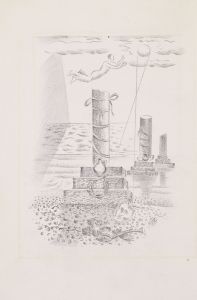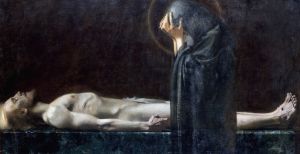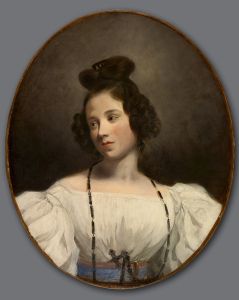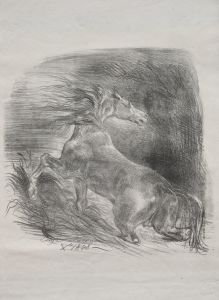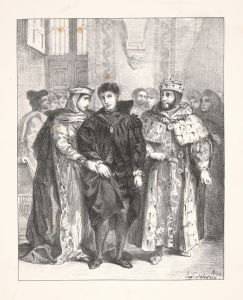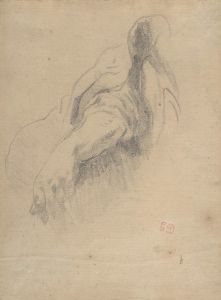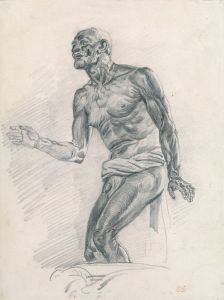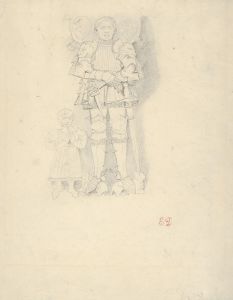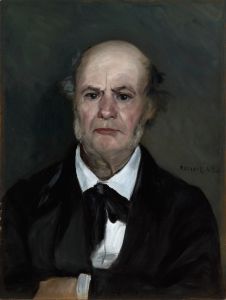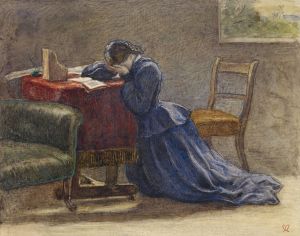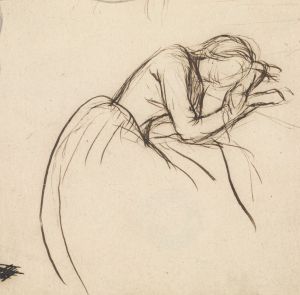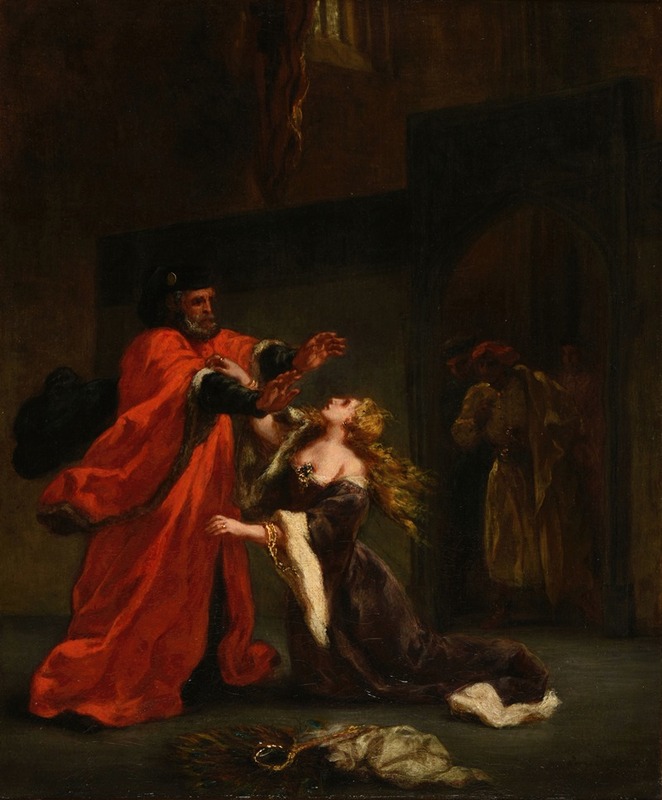
Desdémone maudite par son père
A hand-painted replica of Eugène Delacroix’s masterpiece Desdémone maudite par son père, meticulously crafted by professional artists to capture the true essence of the original. Each piece is created with museum-quality canvas and rare mineral pigments, carefully painted by experienced artists with delicate brushstrokes and rich, layered colors to perfectly recreate the texture of the original artwork. Unlike machine-printed reproductions, this hand-painted version brings the painting to life, infused with the artist’s emotions and skill in every stroke. Whether for personal collection or home decoration, it instantly elevates the artistic atmosphere of any space.
Eugène Delacroix, a prominent French Romantic artist, is renowned for his expressive brushwork and vibrant use of color. One of his lesser-known works, "Desdémone maudite par son père" (Desdemona Cursed by Her Father), reflects his fascination with dramatic and emotional themes, often drawn from literature and theater.
Delacroix was deeply inspired by the works of William Shakespeare, and this painting is a testament to that influence. The subject of the painting, Desdemona, is a character from Shakespeare's tragedy "Othello." In the play, Desdemona is the daughter of a Venetian nobleman, Brabantio, and becomes the wife of Othello, a Moorish general in the Venetian army. Her marriage to Othello, which defies her father's wishes, sets off a chain of tragic events fueled by jealousy and betrayal.
In "Desdémone maudite par son père," Delacroix captures the emotional intensity of the moment when Desdemona is cursed by her father for her disobedience. The painting likely portrays the tension and sorrow of this familial conflict, a theme that resonates with the Romantic era's focus on individual emotion and the complexities of human relationships.
Delacroix's technique in this painting would have been characterized by his dynamic composition and bold color palette, elements that he used to convey the psychological depth and drama of the scene. His ability to depict movement and emotion through color and form was a hallmark of his style, setting him apart from the more restrained approaches of his neoclassical predecessors.
While specific details about the painting's creation, such as its exact date or current location, are not widely documented, it fits within Delacroix's broader body of work that often explored themes from literature, history, and contemporary events. His interest in Shakespearean subjects is also evident in other works, such as his illustrations for various plays and his famous painting "Hamlet and Horatio in the Graveyard."
Delacroix's influence on the art world was profound, and his works continue to be studied for their innovative approach to color and composition. He was a key figure in the transition from the neoclassical to the Romantic style in French art, and his paintings often reflect a deep engagement with the emotional and psychological dimensions of his subjects.
In summary, "Desdémone maudite par son père" by Eugène Delacroix is a painting that exemplifies the artist's Romantic sensibilities and his interest in dramatic literary themes. Through his masterful use of color and composition, Delacroix captures the emotional turmoil of Desdemona's story, offering a visual interpretation of one of Shakespeare's most poignant tragedies.





